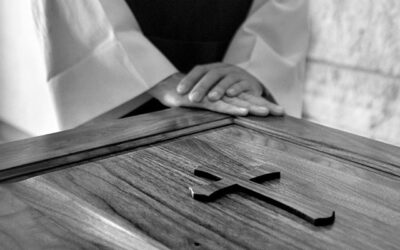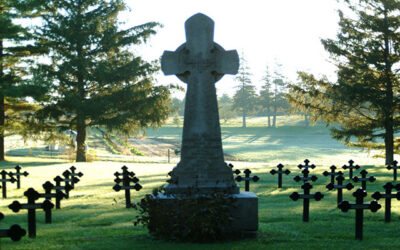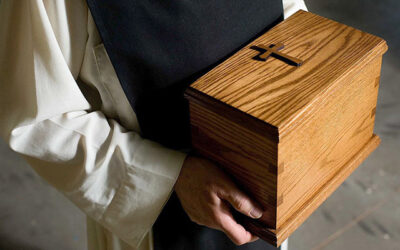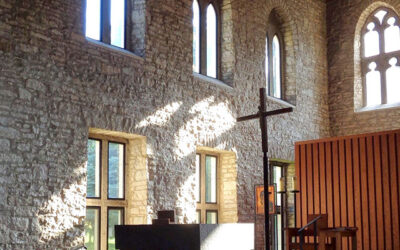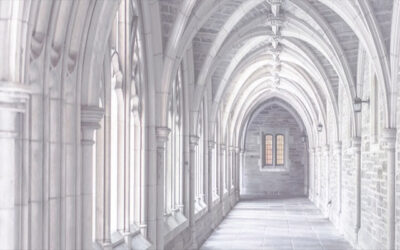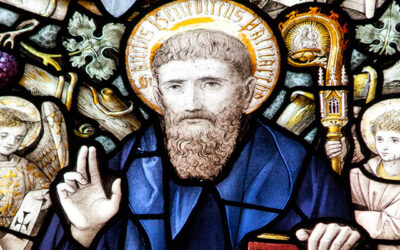Contact Us
If you want to place an order or have a question about one of our products, call us toll free: 888-433-6934
To reach us by mail, phone or fax:
Trappist Caskets
16632 Monastery Road
Peosta, IA 52068
Toll Free: 888-433-6934
Local: 563-585-0793
Fax: 563-690-3817
Hours:
Monday-Friday, 8:00 a.m. to 4:00 p.m. CT.
Summer Friday Hours:
(Memorial Day thru Labor Day) 8:00 a.m. to 11:30 a.m. CT.
If your needs are urgent, please leave a message with our 24-hour answering service and we will return your call immediately.
Outside normal business hours, a 24-hour answering service will take your call and inform us of needs requiring immediate attention.
For questions about our products, and all other inquiries, email us at info@trappistcaskets.com or fill out the Contact Us Form.
Contact Us Form
Or, Let us call you during our regular business hours.
(Mon–Fri, 8:00a–4:00p CT)
Request Call Form
Virtual Tour
We invite you on a virtual tour of New Melleray Abbey – the home of Trappist Caskets. Our monastery, founded in 1849, is located in rural eastern Iowa.
Casket & Urn Blessing
Our skill and labor are offered as a sacred ministry and corporal work of mercy. Beyond the old-world craftsmanship and care that goes into everything we do, every Trappist Casket and Urn is blessed by one of our monks. A card attached to each of these sacred receptacles contains the blessing and is signed by the monk who blessed it.
The Casket Blessing
“Merciful Father, by your Son’s suffering, death, and rising from the dead, we are freed from death and promised a share in your divine life. By the hands of monks each day raised in praise of your goodness, this casket was prepared for your child who died in faith. We ask you now to bless this casket. Receive the soul of our departed brother or sister who is laid in this humble bed as in a cradle, safe in your care until the day of resurrection, when we will all be reunited in the vision of your glory who are Father, Son, and Spirit, one God forever and ever. Amen.”
The Urn Blessing
“Lord, we rejoice in the victory of your son over death: by rising from the tomb to new life, he gives us new hope and promise. Bless this urn and bless the soul of our departed loved one whose ashes it will contain. Surround them with your love and protection until they are safely restored to you in eternal life where death will be no more. We make this prayer in the name of Jesus Christ your Son. Amen”
Memorial Tree
For each person who is buried in a Trappist Casket or Urn, a tree will be planted in New Melleray’s award winning, sustainable forest. This living memorial is our way to honor your loved one and to give back to the earth.
The tree will be planted in the springtime of the year and the occasion will be consecrated with a special blessing by the monks.
Environmental Stewardship
For hundreds of years the Trappists have been vigilant caretakers of the land. Here at New Melleray Abbey, we have practiced responsible stewardship for over 155 years.
Our fields, gardens, and orchards produce bountiful crops of organic fruits, vegetables, and grains. And trees from our award-winning forest provide lumber for caskets and urns.
Our Monastery and Traditions
Trappist Caskets is a work of the monks of New Melleray Abbey. We are monks of the Roman Catholic Church who belong to the Order of Cistercians of the Strict Observance, known as Trappists.
Founded in 1849, New Melleray Abbey was established at the time of the great famine by the monks of Mt. Melleray Abbey in Ireland.
As Cistercians, we follow the ancient monastic Rule of St. Benedict. Consistent with that rule, our vocation is expressed in a life of contemplative prayer, community liturgy, and manual labor. Simple living is one of the hallmarks of our life.
New Melleray Abbey launched Trappist Caskets in 1999, and shortly after began selling caskets and urns directly to families at wholesale costs. Our work at Trappist Caskets provides us with both meaningful work and vital financial support. To find out more about New Melleray Abbey and our way of life, visit our website.
Cistercian End of Life Traditions
For Trappists, there is beauty in death because it is treated as a natural part of life. Read More about Cistercians and death and the Church and death.
The funeral and burial of a Cistercian Monk reminds us that by acknowledging the reality of death we can more readily affirm the meaning of life. Read More about the Funeral of a Cistercian Monk.
Cistercians and Death
Trappist monks strive to “prefer nothing to Christ.” In devoting their lives to a search for God, they follow a lifestyle marked by simplicity and prayer, as well as a concern for the environment. Visitors to Cistercian monasteries often notice a strong sense of relatedness that links the abbeys themselves to their physical surroundings. Here at New Melleray Abbey, the beauty of the earth is reflected in the abbey church’s limestone walls, the solid oak of the choir stalls and tabernacle house and the plain granite altar. The church is filled with light that streams through tall stone arched windows of clear glass and sinks into shadow as night approaches.
This same uncomplicated and reverent regard for the beauty of God’s created world is reflected in the way Trappist monks approach death.
“This is why the monastery is a kind of prophetic place, an anticipation of the world to come, a permanent declaration of a universe re-made in God, whose poles are charity and the praise of God.” (Andre Louf, The Cistercian Way, p. 60.)
For Trappists, there is beauty in death because it is treated as a natural part of life. That is why Trappists do not try to hide what happens to the body at death or interfere with the natural process of returning it to the earth.
The reason Trappists are able to see death in this light is because they believe something much greater is taking place. It is the final step along a path they have been following all along—the path to God.
“I do not know, except by Christian faith, what lies beyond this life. In death I lose everything without knowing for sure that there is anything to follow. Faith however, assures me that there is a God who is like a loving father or mother. The ultimate reality is not death and extinction. But God.” (Charles Cummings, Monastic Practice, p. 192.)
Church and Death
Anointing the Sick
One of the greatest benefits of the Anointing of the Sick is the forgiveness of all sins, venial and mortal, and pardon for all the punishment still owed for having sinned. In other words, it prepares us for immediate entry into heaven. Normally, if time and the condition of the sick person permits it, sins would be confessed and forgiven in the Sacrament of Reconciliation. If circumstances do not make this possible for the sick person, we have the consolation of knowing that the Anointing of the Sick will forgive all one’s sins and the remnants of sin.
The Anointing of the Sick is meant to be received at the beginning of an illness and Viaticum (Holy Communion before dying) is received at the end of a final illness. Christ first prepares us by a cleansing as powerful as Baptism by means of the Anointing of the Sick. Then He comes to us in the Eucharist before dying so that he may strengthen us and be with us on our final journey through death.
Many sick people are unable to take any food in the last days of their final sickness. The Church now allows the sick to receive the Eucharist under the form of wine alone. Most of the dying are able to take a few drops of water and so could also receive a few drops of wine.
The Anointing of the Sick may be received not only at the beginning of a serious illness but also before serious surgery and by the elderly and by children able to appreciate and be strengthened by this Sacrament and by those who have a serious mental illness. It may be repeated at new progressive stages of illness or when the elderly become notably weaker. In addition to the graces of the Anointing of the Sick, we may also receive an indulgence for the moment of death called the Apostolic Pardon. This does not of itself forgive sin the way the Sacrament does, but it removes all debt of punishment due to sins that may have happened since the last time the Sacraments were received. A Priest gives this indulgence following Viaticum if he is present. If no priest is available, the indulgence can be received for the moment of death simply by the long-standing expressed desire of the sick person to benefit by this grace of pardon.
Sacraments of Desire
The Anointing of the Sick can be received by the desire for it, but without the desire of receiving this sacrament, even the visible sacrament will not be received. In other words, the desire is so important, when the sacrament cannot be received visibly because of circumstances preventing it, it will be received interiorily because of the desire for it. If one does not want to receive the sacrament or doesn’t intend to receive because of disbelief or some other cause, then even going through the visible reception will not be effective.
When St. Thomas teaches that the Anointing of the Sick removes the remnant of sin, he means it removes any punishment that might remain to be suffered for having sinned. When he says the sacrament also removes the guilt of sin if it finds it, he means that if there are any unforgiven sins then this sacrament will forgive them. However, it is still necessary that the person desires to have these sins forgiven. Normally, the sacrament of Reconciliation would be received before the Anointing of the Sick when there is danger of death but if circumstances prevent this, then the Anointing of the Sick will effectively remove all sins, mortal and venial, for which the person is sorry and desires forgiveness.
The desire for the sacrament is the beginning of its reception which normally culminates in the actual reception of the visible form of the sacrament. When circumstances prevent it from being received in the visible form, then it is received interiorily in virtue of the desire for it. This should be a great consolation for us, to know that we can receive the sacrament of the Anointing of the Sick by desire when we are prevented from receiving it in the exterior visible form.
It should not surprise us that the Anointing of the Sick can be received by desire especially when we remember that forgiveness of sins is possible through an interior act of perfect contrition. The remnants of sin and punishment still owed can be removed by desire for the plenary indulgence to be received at the moment of death. Anointing of the Sick has as its principal effect the remission of all sin and the punishment still owed for having sinned. It is a great mercy of God that he wills to make it possible to receive the sacrament of Anointing of the Sick when no priest is available to do the anointing.
Order of the Christian Funeral
1. The Vigil
The Order of Christian Funeral notes that “the vigil for the deceased is the principal rite celebrated by the Christian community in the time following death and before the funeral liturgy…. At the vigil the Christian community keeps watch with the family in prayer to the God of mercy and finds strength in Christ’s presence…. The assembly at the vigil calls upon the Father of mercy to receive the deceased into the kingdom of light and peace.”
The structure of the Vigil is; introductory rite, liturgy of the word, prayer of intercession and concluding rite. An opening song has been added to the rite and the singing of at least the refrain of the responsorial psalm is strongly recommended. As the Order of Christian Funeral notes “Music is integral to any Vigil, especially the Vigil for the deceased. In the difficult circumstances following death, well chosen music can touch the mourners and others present at levels of human need that words alone fail to reach.”
The Vigil rite also allows for the family to “personalize” this ceremony. Immediately after the concluding prayer and before the concluding rite, the ritual notes “A member or a friend of the family may speak in remembrance of the deceased.” Oftentimes the family might wish to bring into the funeral rite, a rosary, picture or hand-crafted article made by the deceased, a favorite poem or song, something representing the deceased and his/her life. This is the appropriate time and place for these “personal touches” to be presented and shared with the community. The revised rite makes provision for such remembrances at this time rather than at the Preparation of Gifts during the Eucharist at which time only the gifts to be offered in the Eucharist (the bread and wine) are to be presented.
Families, parish bereavement staff, and pastor are encouraged to plan together the funeral rites so that they may be an effective source of consolation and hope.
2. The Funeral Liturgy
The funeral liturgy is the central liturgical celebration of the Christian community for the deceased. At the funeral liturgy the community gathers with the family and friends of the deceased to give praise and thanks to God for Christ’s victory over sin and death, to commend the deceased to God’s tender mercy and compassion, and to seek strength in the proclamation of the paschal mystery.
Two forms for the funeral liturgy are given in the Order of Christian Funeral: “Funeral Mass” and “Funeral Liturgy Outside Mass” (in those instances when Mass cannot be celebrated although the preference is for the traditional funeral mass.)
Like the Vigil, the structure of the Funeral Liturgy is familiar; reception of the body, celebration of the liturgy of the word, celebration of the liturgy of the Eucharist, and the final commendation and farewell.
Reception of the Body
The rite begins with the reception of the body at the church. This may occur in conjunction with the funeral mass as the family and friends of the deceased bring the body from the funeral home. Or it may take place some time prior to the beginning of the mass, in which case the mass begins with the greeting and penitential rite as at the Sunday liturgy.
This rite of reception is significant in that it visibly shows the gathering of Christ’s body the Church, welcoming into its midst one of its members who now has completed his/her journey of faith. A journey begun in baptism, nurtured by the Eucharist, strengthened by the other sacraments and now fully immersed into the likeness of Christ’s death and resurrection.
The body is sprinkled with holy water in remembrance of baptism. The family of the deceased then places the funeral pall over the casket in silence. Just as the deceased’s family brought the person to the church for baptism and clothed them with their baptismal garment, so now the deceased’s family again “clothes” them with the pall which signifies that same garment as they enter eternal life.
The Order of Christian Funeral notes that any national flags or insignia of associations (Knights of Columbus, Foresters, etc.) which may have been on the casket prior to reception at the church are removed at the church entrance and may be replaced once the coffin has been taken from the church. A baptised Christian’s baptismal identity as a member of the Body of Christ, the Church, supersedes any membership in a human organization.
Celebration of the Liturgy of the Word
The selection of scripture readings particularly from the New Testament and Gospels has been expanded over the years. Also expanded is the selection of opening prayers to cover a wider range of persons and circumstances. Again the church wishes to offer every possible assistance to its members who are confronting the loss of a loved one through death. Careful planning by the family, parish bereavement staff, and priest will allow the richness of this rite to be experienced by all present.
Celebration of the Liturgy of the Eucharist
In both the Liturgy of the Word and Liturgy of the Eucharist, the Order of Christian Funeral encourages a full use of song. At a minimum, the acclamations of the Eucharistic prayer (Holy, Memorial Acclamation, Great Amen) should always be sung. In the Liturgy of the Word, the responsorial psalm (at least the refrain) and gospel acclamation should be sung. Only bread and wine are to be presented at the preparation of gifts.
The Final Commendation and Farewell
Good-byes are always moments of reflection. In this part of the funeral liturgy the gathered assembly bids farewell to one of its members and entrusts them to the care of God.
Preceding this rite, the Order of Christian Funeral does allow again for a “personalization” by a member or friend of the family to speak in remembrance of the deceased. This should not be a eulogy; it should be brief such as thanking all present for their presence and support to the family in these moments of grief.
Of special importance in this rite is the “Song of Farewell.” The Order of Christian Funeral demands that this song be true to its nature, i.e. songs are to be sung. “The song of farewell…is the climax of the rite of final commendation. It should be sung to a melody simple enough for all to sing.
During the song of farewell the body of the deceased is honored with incense as a visible reminder that during its earthly life it was a temple of God and dwelling place of the Holy Spirit.
3. The Rite of Committal
The Order of Christian Funeral states that “the rite of committal, the conclusion of the funeral rites, is the final act of the community of faith in caring for the body of its deceased member. It may be celebrated at the grave, tomb or crematorium. Whenever possible, the rite of committal is to be celebrated at the site of committal…rather than at a cemetery chapel.”
Psychologically and emotionally this final act of separation is a most difficult time for the family and friends of the deceased. The full reality of death is experienced as the body of the deceased is returned to the earth from which it came and the family and friends must “let go” in the act of separating themselves from the deceased. In these difficult moments, the church once again offers its comfort and support. Viewed in the context of faith the grave is not a place of despair and hopelessness but rather, united with Christ in his own death and burial, a place of rest and peace in which the body of the believer awaits the promised resurrection on the last day.
Structurally, this rite is very brief. It consists of an invitation to prayer, recitation of a scripture verse, prayer over the place of committal, the act of committal, intercessions, Lord’s Prayer, concluding prayer, and prayer over the people and dismissal.
Order of Christian Funeral prefers the actual committal (the lowering of the body into the grave) to take place within the context of the rite with the family and friends present. Obviously this has been the practice of the church for centuries except for recent times in our own country.
Psychologists and grief counselors tell us that as difficult as it may be at the time to see the body of a loved one physically placed into the grave or tomb, such “reality therapy” is an important first step on the road to acceptance of the fact of death and the taking up of life once again without the presence of the deceased. In witnessing the burial of our dead we are under no illusion as to what has become of them or where their body has gone. Like all the other elements of the Order of Christian Funeral, in these final moments, the family and friends of the deceased do not stand alone, the church is there to offer its gift of presence and hope based on faith.
Related Rites and Prayers
Prayers After Death
The Order of Christian Funeral “provides a model for prayer that may be used when the minister first meets with the family. The rite follows a common pattern of scripture reading, response, prayer, and blessing and may be adapted according to the circumstances.” As the introduction further states, the initial pastoral visit can be important as the first tangible expression of the community’s support for the mourners.”
Gathering in the Presence of the Body
This rite provides a model of prayer that may be used when the family first gathers in the presence of the body, when the body is prepared for burial or after it has been prepared. The family members, in assembling in the presence of the body, confront in the most immediate way the fact of their loss and the mystery of death.
This rite is structured as follows; sign of the cross, scripture verse, sprinkling with holy water, psalm, Lord’s Prayer, concluding prayer, blessing. The first viewing of a deceased loved one is a moment of great emotion. Through this rite the church “seeks to be with the mourners in their need and to provide an atmosphere of sensitive concern and confident faith.” The minister for this rite could be someone from the parish staff, the parish bereavement committee, the funeral director or a member of the deceased’s family if so willing and able.
At the conclusion of this rite, the minister is directed to extend a gesture such as signing the forehead of the deceased with the sign of the cross. Family members and friends could also be encouraged to participate in this gesture or some similar gesture such as resting a hand on the folded hands of the deceased or on the deceased’s shoulder. Such a gesture can be very healing for the mourners in that it allows them to “own” the death of the one they loved and offer them a concrete way of expressing their love.
Transfer of the Body to the Church or to the Place of Committal
The procession to the church is a rite of initial separation of the mourners from the deceased. Because the transfer of the body may be an occasion of great emotion for the mourners, the minister and other members of the community should make every effort to be present to support them. This rite is structured as follows; invitation, scripture verse, litany, Lord’s Prayer, concluding prayer, invitation to procession, procession to the church or place of committal.
The final viewing and last “good-byes” before the casket is closed and the procession to the church or cemetery is a wrenching time emotionally, equaled perhaps only by the final leave-taking at the time of committal. Again at this time, the church wishes to be supportively present to its members who are mourning the death of a loved one. The scripture, brief litany and prayers speak of Christian comfort and hope.
Like the “Rite of Gathering in the Presence of the Body,” the minister of this rite may be someone from the parish staff or bereavement committee, the funeral director or a member of the deceased’s family or another relative or friend if so willing and able.
The Funeral of a Monk
The funeral and burial of a Cistercian Monk reminds us that by acknowledging the reality of death we can more readily affirm the meaning of life. Monks take seriously the words of Christ as recorded in the Gospel of John: “I am the Resurrection and the Life. Those who believe in me, even though they die, will live.” (Jn 11: 25). Accordingly, monks live their lives in the conviction that when death occurs it is not something to be feared or denied. Instead, it is to be welcomed as a birth into an entirely new way of being fully and eternally alive. The death and burial of a Cistercian monk reflects a harmony between the stark finality of death and the profound reality of what is taking place in a life that is just beginning.
Preparing for Death
As death approaches, the abbot alerts the monks and tells them one of their brothers has been anointed and is dying. When death is imminent, the abbey bell is rung to summon the entire community to their brother’s side. The monks gather in the sickroom or in the hallway to pray together, reciting psalms, litanies and other prayers from their Cistercian tradition. Whenever possible, a hospitalized monk is brought home to die in the company of his brothers.
Transferring of the Body
Immediately following death, the body is washed and clothed in a clean habit. In most cases this is all the preparation that is needed prior to the funeral which takes place within 24 to 48 hours. The monks then gather for a short ceremony of prayers and readings during which time the abbot blesses the body before it is transferred in a procession from the infirmary to the church.
If the monk has suffered a debilitating physical illness or if the funeral must be postponed in order to allow time for relatives to arrive, the body will need to be taken into town to be embalmed and returned to the monastery for burial. When this happens, the entire community gathers to receive the body when it arrives. The abbot and several other monks bring their dead brother’s remains inside the cloister for a simple ceremony consisting of blessings and prayers prior to processing into the church.
Keeping Vigil
The body is placed on a bier or in an open pine box in front of the abbey church’s altar. From then on for the rest of the day, through the night and into the next morning, the monks take turns keeping prayerful watch beside the body. This centuries-old tradition of keeping Vigil throughout the hours preceding the funeral is a beautiful embodiment of the spiritual bond that unites all Cistercian monks in what has come to be known as the “school of charity.”
The Funeral Mass
Singing an entrance hymn, the entire community is led into the church by a monk carrying the processional cross. The funeral begins with the traditional Mass, Roman Catholic for the Dead, presided over by the Abbot, clothed in white vestments to symbolize the resurrection of Christ. When the Mass has ended, the abbot comes forward to bless the body with incense and sprinkle it with holy water. While this is taking place, the rest of the monastic community sings a hymn which affirms the Christian’s belief in the power of Resurrection: “And I will raise him up. And I will raise him up. And I will raise him up on the last day.”
The procession to the cemetery is led by six monks who come forward to carry the bier from the church. With the Paschal Candle to guide them, the procession moves forward through the chapter room and out the door of the Abbey to the cemetery. During the final procession, the great abbey bells are rung at solemn intervals until everyone has gathered at the grave site.
The Burial of a Monk
The bier is carefully placed atop four straps that have been laid across the grave. Next to the grave is a mound of fresh dirt and several shovels. Standing at the head of the grave, the abbot prays while blessing both the body and the grave one last time with holy water and incense. A white cloth is placed over the body and then the body is carefully lowered into the grave while the community sings Psalm 138. When the body has been lowered all the way to the bottom of the grave, the straps are pulled back, the brothers step aside, and the Abbot throws the first handfuls of dirt onto the body. The shovels are then handed from brother to brother in order for the entire community to take a turn at filling in the grave. In recent years the brothers have invited anyone who is present for the burial to come forward and participate in this final act of closure and farewell.
Before leaving the cemetery the Abbot invites all who are present to join him in praying the Lord’s Prayer prior to concluding the burial by singing once again, the words of the Resurrection Song “And I will Raise Him Up.”
At the conclusion of the song, the burial has come to an end. There is no procession back to the church, and no reception that follows, (although relatives and friends are invited to gather in the Abbey’s Guesthouse for coffee and light refreshments.) The monks return to their ordinary lives of work and prayer within the monastery. They have just buried one of their brothers secure in the belief that he will rise again, and they know that he is at rest in the love of Christ.
Monks Chanting Vespers
Download a Free MP3 song of the Monks Chanting or share this MP3 with someone who might find comfort from it.
Trappist Caskets Blog
Advanced Planning Helps Ensure Your Final Wishes are Met
Death is a tough topic to talk about let alone plan for in advance. Coming to terms with the reality of life’s end is usually something we put off until the need is imminent. Anyone who has experienced the loss of a loved one knows how emotional those next few days...
The Catholic Church and Cremation
For most of its 2,000-year history, cremation was forbidden by the Catholic Church. This teaching was born of historical context as well as biblical interpretation. In early times, Romans cremated their dead as a rejection of an afterlife, a direct contradiction to...
A Work of Human Hands – Trappist Caskets and Urns
For Trappists, death is understood as a natural part of life. The beauty with which God bestows upon the earth is subject to the burden of time. Seasons change, tides rise and fall, morning light dims with night. Such occurrences remind the monks to reverently regard...
From Ireland to Iowa: The Trappist Monks of New Melleray Abbey
The Trappist monks, belonging to the Order of Cistercians of the Strict Observance, share a rich history that spans sixteen hundred years. From arid Egyptian deserts to green pastures of Ireland, monks have prayed, studied, and worked together for centuries. After the...
What is Monasticism?
The concept of monasticism is ancient and is found in many religions and philosophies. In the centuries immediately before Christ, Hinduism, Buddhism, and Judaism all developed alternative styles of life which involved renouncing the world in some ways, in order to...
Organic Garden at New Melleray Abbey
From the very beginning agriculture has been an integral part of our Cistercian monasteries. The monks of New Melleray have always lived close to the land. While today we lease our crop land to local farmers, we still can enjoy the rich experience of growing food for...
Famous Monks – St. Benedict
St. Benedict’s Rule for Monasteries (RB) was not the only monastic Rule available in the sixth century, but it was the most livable for people of ordinary strength. From his own experience and from the tradition of Egyptian monasticism, Benedict absorbed the authentic...
Texas Prepaid Compliance – https://www.prepaidfunerals.texas.gov/
